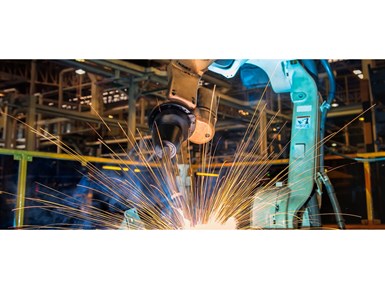DP Technology and Alma Develop Robot Additive DED Solution
DP Technology and Alma have partnered to create a complete programming solution for robot additive direct energy deposition.
Share







Takumi USA
Featured Content
View More



DP Technology, creators of ESPRIT CAM software for CNC use, have partnered with Alma, a CAD/CAM provider for robotics, to create a complete programming solution for robot additive DED (direct energy deposition).

Additive DED is a series of metal 3D printing technologies that creates parts by melting and fusing material as it is deposited. Wire arc additive manufacturing (WAAM), also known as DED-arc, is an additive DED technology applied in robot additive DED to produce the near net shape preforms with significant cost and lead time reductions, increased material efficiency and improved component performance.
Compared to a machine tool-based DED machine, which can cost up to several million dollars, a robotic DED machine costs significantly less (close to $150,000 to $200,000). Additionally, many companies can retrofit existing programmable, industrial robots for additive DED applications. However, to program a robot to perform an additive DED task, an engineer must determine both the toolpath of the DED head and the robot arm movements that efficiently achieve the ideal toolpath.
To provide customers with an end-to-end solution for programming robot additive DED, DP Technology and Alma have pooled ESPRIT’s advanced toolpath planning in both subtractive and additive areas and Alma’s robotics trajectory computation technology and off-line programming of arc welding robots.
This solution allows Alma to use the full ESPRIT additive DED cycles such as 3x, 4x and 5x, bringing the software to a new level of support for additive technology. It also allows ESPRIT to support industrial robot brands including Yaskawa, ABB, FANUC and Kuka.
The result of this technology partnership is a complete workflow that provides end users with dedicated additive toolpath planning and programming; robot programming, simulation, verification, collision detection and code generation; and subtractive finishing process planning, simulation, verification, collision detection and G-code generation.
Related Content
-
Automated CAM Programming – Is Your Software Really Delivering?
A look at the latest automation tools in Autodesk Fusion 360 software and how forward-thinking machine shops and manufacturing departments are using them to slash delivery times and win more business.
-
Generating a Digital Twin in the CNC
New control technology captures critical data about a machining process and uses it to create a 3D graphical representation of the finished workpiece. This new type of digital twin helps relate machining results to machine performance, leading to better decisions on the shop floor.
-
How to Mitigate Chatter to Boost Machining Rates
There are usually better solutions to chatter than just reducing the feed rate. Through vibration analysis, the chatter problem can be solved, enabling much higher metal removal rates, better quality and longer tool life.


















.png;maxWidth=150)

















